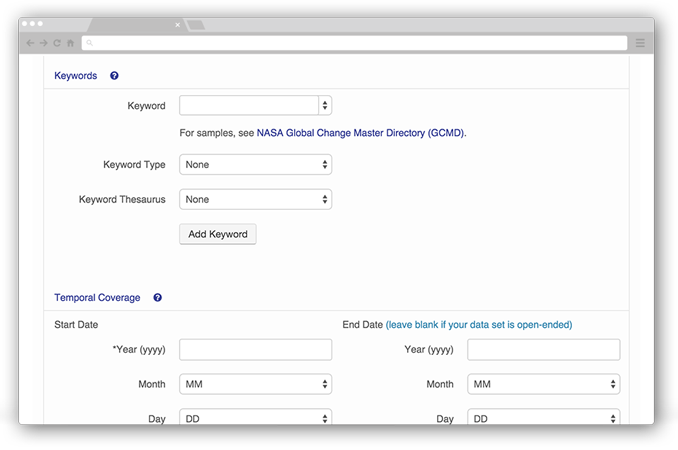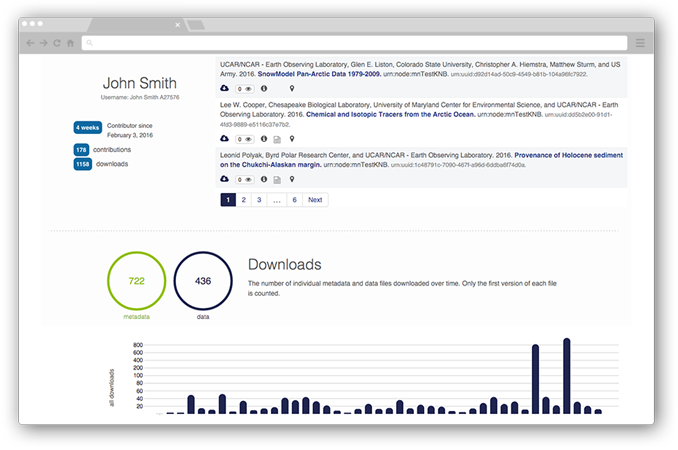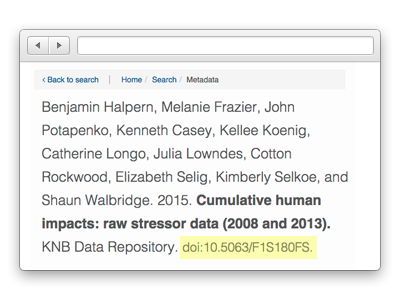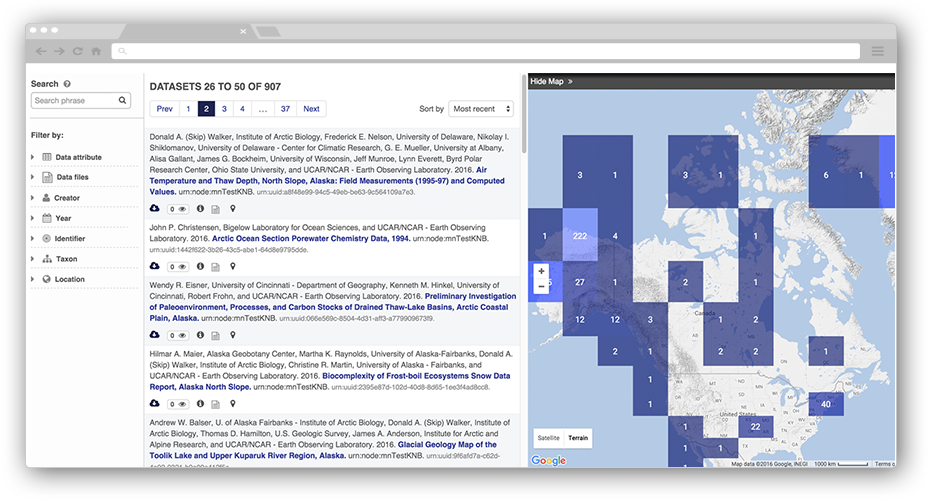Data and software from NSF Arctic research
News: Arctic Data Center Funded for 5 More Years.
In the next five years, the Center will increase capacity to support big data from satellites, remotely operated aircraft, and sensor networks. “Our next phase of operations will be exciting as we engage with researchers earlier in their research cycle” says Matthew Jones, PI for the award and Director of Informatics Research at NCEAS. “Through training, direct support, and a variety of new data management services such as tools for assessing data quality and sharing interactive data visualizations within research groups before the data are published, the Arctic Data Center will facilitate collaboration for lab and field groups, while also improving reproducibility across Arctic research.”
Read the full press release – Sustaining the Arctic Data Center Enables Research Advances Using Open Data – below!
New Service: Portals
Create a custom, branded portal for your research topic or lab group that spans datasets in the Arctic Data Center – available for all users. Branded portals provide a convenient, readily customized way to communicate your science, your team, your data, and related data from within the Arctic Data Center.
Use a portal as a lab website or a project landing page with custom colors and branding. Pick datasets, add and reorder pages, and upload images in minutes with the easy-to-use online portal editor – get started today.
- Permafrost Grown: Farmers and Researchers Co-Produce Knowledge on Permafrost-Agriculture Interactions August 26, 2025 - Highlight: “Farming in Alaska is like farming on another planet” - Local Farmer working with the Permafrost Grown project. The Unseen Challenge Beneath Alaska’s Farms Rising temperatures, extended warm seasons, and a growing number of frost-free days are shifting the geographic range of crop cultivation, contributing to expanded agricultural activity across Alaska. Farming in remote Arctic regions has its difficulties, including a shortened growing season, limited access to resources, and a unique challenge: permafrost. To research the effect of permafrost on agriculture, the Permafrost Grown project (funded by NSF’s Navigating the New Arctic Initiative; www.permafrostgrown.org) brings together researchers from the… ... Read more »
Features of the NSF Arctic Data Center

Fast, online data set submission down to the detail you need
Upload software, scientific analysis code, and data in any format.
View usage statistics of your data and a summary of your contributions

Login with your ORCID account
Why ORCID?
ORCID identifiers enable researchers to cross link across different types of research products (data, publications etc.) to create unique profiles showcasing their work. Data are valuable research products and we believe researchers should get credit for publication of data sets. By integrating ORCIDs with the NSF Arctic Data Center, researchers will be more able to showcase their work and receive credit.
Mint DOIs for your data sets to use in publications and across the web

Once data have been submitted to the Arctic Data Center, our metadata staff will review and provide suggestions for improvement, and, once everything is set, we will make the data publicly accessible and publish it with a DOI. This will allow you and other researchers to cite the data set directly in NSF reports, publications, and other venues. The DOI is registered with DataCite using the EZID service, and will be discoverable through multiple data citation networks, including DataONE and others.
Fast, easy discovery with spatial tools


